Braces in Santo Domingo
Search and Compare the Best Clinics and Doctors at the Lowest Prices for Braces in Santo Domingo
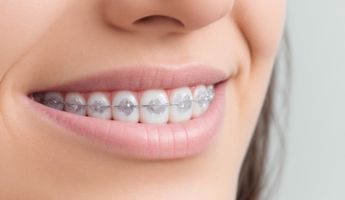
Find the best clinics for Braces in Santo Domingo
With Medijump you can browse 4 facilities offering Braces procedures in Santo Domingo. The cheapest price available is $300 in Santiago de los Caballeros
Braces in Dominican Republic
Price: $ 300
Braces in Santiago de los Caballeros
Price: $ 300
Braces in Santo Domingo
Price: $ 1,360
Vietnam offers the best prices Worldwide
Price: $ 1
From 2 verified reviews
Joseph Salazar, 04 June 2019
After weighing in all things that need to be considered and the different options available for dental tourism, and reading a lot of reviews, I decided to go to Santo Domingo, Dominican Republic, to see Dr. Juan Tomas Pena.The Dr. and his team at Denstetica were amazing, knowledgeable, attentive, very welcoming and friendly.The first phase of my treatment involved four implants and the extraction of a molar; after the implants have set, I will go back for phase two, which is to have my crowns done.Dr. Pena, was very thorough during his examination and throughout his work, making sure that I was comfortable and that everything was done to perfection; all in about 4 hours and I didn’t have any swelling!I surely recommend Dr. Pena and his fantastic group at Denstetica!
From 70 verified reviews
Danielle Courteau, 23 November 2019
Highly competent dentists and specialists, efficient staff. Highly recommended.
From 2 verified reviews
Ronald, 03 March 2018
Excellent clarified all my doubts and the very personalized treatment Thanks to Ms. Denisse.
Hispadent - Jose Alonso MD, can be found in Calle Guayubin Olivo, Santo Domingo, Dominican Republic and offers its patients Braces procedures as well as 38 other procedures, across 2 different procedure categories. At present, there is no pricing information for Braces procedures at Hispadent - Jose Alonso MD. The pricing information is quite specialised, so it's only available on request, and the average price is around $830. Many medical professionals work at the Dental, with 4 in total, and Hispadent - Jose Alonso MD has several accreditations, including: AAAM - American Academy of Aesthetic MedicineAGD - Academy of General DentistryAACD - American Academy of Cosmetic DentistryAAID - American Academy of Implant DentistryAOD - Asociacion Odontologica Dominicana
- Home
- Dominican Republic
- Santo Domingo
Compare Before & After Photos of _procedure_photos.phpBraces
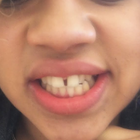

Front view
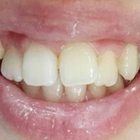
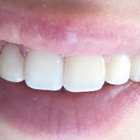
Front view
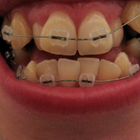

Front view
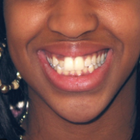

Front view
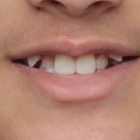
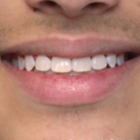
Front view
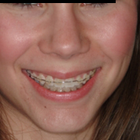
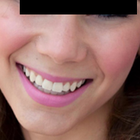
Front view
WHY US?
At Medijump, we're making medical easy. You can search, compare, discuss, and book your medical all in one place. We open the door to the best medical providers worldwide, saving you time and energy along the way, and it's all for FREE, no hidden fees, and no price markups guaranteed. So what are you waiting for?

Free

Best Price

Widest Selection

Risk-Free
What do you need to know about Braces in Santo Domingo?
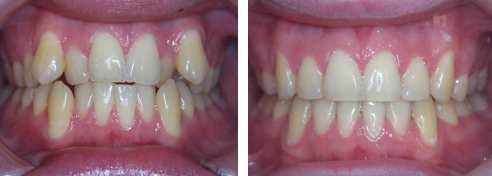
The Braces, commonly referred to as braces, is a mainstream dental technique designed to correct and align a person's dentition. Beneficial for both aesthetic and health reasons, the process involves repositioning misaligned teeth to improve your oral health and overall appearance. Aesthetic benefits aside, the Braces in Santo Domingo also assists in enhancing oral hygiene, reducing discomfort when chewing, and even helping in speech correction in certain scenarios.
A thorough understanding of the Braces requires patient awareness regarding the longevity and complexity of the procedure. The dentist assesses the oral condition of an individual and plans a custom treatment accordingly. The treatment is usually achieved through subsequent periodic modifications that help guide teeth to their correct position over time. Your dentist unwaveringly monitors the Braces process, ensuring progress, and addressing any potential complications promptly.
There are several types of braces, including:
- Metal braces –are the traditional braces that come to mind for most people. Metal braces are made of metal brackets and an archwire is used to put pressure on your teeth and jawline, and O-rings are used to connect the brackets and the archwire.
- Ceramic braces – these are the same shape and size of metal braces. However, they are tooth-colored or clear, so they blend in with your teeth.
- Lingual braces – this type of braces are essentially the same as traditional metal braces, except that the wires and brackets are placed on the inside of your teeth.
- Clear aligners – mostly known as Invisalign (the most popular brand of clear aligners), these are removable, clear braces. This type of braces is best for people who only need minor corrections.
Braces are usually used during adolescence. However, more and more people are getting them later on in life.
What is the cost of Braces in Santo Domingo?
The cost of Braces or braces in Santo Domingo can vary based on a range of factors. These can include the specific type of braces chosen, the severity of the case, the expected duration of the treatment, and the dentist's experience and expertise. The costs can also be influenced by the geographical location. For example, the pricing for this dental intervention could be influenced by the local cost of living and local healthcare standards.
Apart from these specifics, your insurance coverage can also impact the final cost of the treatment. It's vital to verify with your insurance provider if orthodontic treatments like the Braces are covered in your plan and to what extent. Some plans cover only a portion of the treatment, while others may cover more. Speaking with your dentist about costs and payment plans is recommended for a smooth, transparent, and stress-free treatment experience
What does a Braces Procedure Involve?
The Braces involves multiple stages which start with an initial consultation at an accredited clinic to assess the dental needs and the approaches applicable to the case. The first step typically involves a meticulous examination, including an X-ray of your dentition to gain a complete understanding of your oral structure.
Subsequent to the initial consultation, the dentist crafts a specialized plan that outlines the sequence for the Braces. Once the plan is finalized and consented by the patient, implementation begins. The chosen type of braces are put on, which is a process that can last for a few hours. Post-installation, periodic adjustments at regular intervals are crucial to guide the teeth to the desired position gradually.
How Long Should I Stay in Santo Domingo for a Braces?
As the Braces involves separate steps over an extended period, individual visits to your dentist or orthodontist are usually brief. Most patients can expect their initial fitting to take around one to two hours, with follow-up adjustment visits usually taking around 15 to 30 minutes.
While the procedure does not require any hospital stay and has minimal impact on your daily activities, it's crucial to note that a full Braces or braces treatment can often last between 18 to 24 months. Therefore, any decision to relocate during the treatment period should be carefully considered.
What's the Recovery Time for Braces in Santo Domingo?
The concept of 'recovery time' for the Braces differs from other medical procedures. After your braces have been fitted or adjusted, you may experience general discomfort or difficulty in eating solid food. Usually, this discomfort subsides in about a week.
Contrarily, the overall process of correcting dental alignment using braces isn't quick. Depending on factors such as age, dental condition, and the extent of alignment required, the entire process may last anywhere from 1 to 3 years. As progress varies from case to case, it's best to discuss this with your healthcare provider to understand the timeline for your unique situation.
What's the Success Rate of Braces in Santo Domingo?
The Braces enjoys a remarkable success rate. With high patient satisfaction levels reported worldwide, the process has helped many to achieve a desirable and healthier smile. The success of a Braces differs from case to case and depends on the patient's dental condition, age, and the type of braces used.
Another crucial factor that significantly influences the success of the Braces is patient compliance. Adherence to the guidelines provided by the orthodontist, including diligent oral hygiene, attending follow-up appointments, and ensuring regular adjustments are a few ways to optimize treatment outcomes and experience long-term success.
Are there Alternatives to *Treatment Procedure* in Santo Domingo?
Yes, there available alternatives to the Braces in Santo Domingo. Invisalign, for instance, is a modern orthodontic treatment that, unlike traditional metal braces, uses clear, removable aligners custom-fitted to your teeth. This alternative has grown popular due to its near-invisible appearance, making the treatment less noticeable.
Another alternative is the lingual braces; these are essentially similar to traditional braces but are placed on the inward-facing side of your teeth, making them less visible when you speak or smile. Dental surgery is a more drastic option, usually considered only in extreme cases when orthodontic treatments alone may not be sufficient.
It's important to discuss these alternatives with your dentist and consider all aspects such as costs, duration, maintenance, and visual appearance before deciding on the most suitable option for you.
What Should You Expect Before and After the Braces?
WebMD, could be a few years or indefinitely. Many patients have reported heightened self-confidence and improved oral health, making the Braces a worthy investment, which has made a mark in the field of Health and wellness.
What are some potential complications of the Braces in Santo Domingo?
While the Braces is generally safe, like any dental procedure, there can be potential complications such as discomfort after adjustment, difficulty in brushing, loss of calcium from the teeth (tooth decalcification), and shortening of tooth roots. Rarely, patients may also experience allergic reactions to some of the metals used in braces.
Difficulty brushing could potentially lead to an accumulation of plaque, leading to gum disease if not adequately managed. As such, engaging in regular oral hygiene practices is of utmost importance. If you notice any of these issues, it is crucial to raise them with your dentist as soon as possible
What is the Importance of Aftercare for Braces?
Aftercare plays a crucial role in the success and longevity of the results of the Braces. Once the braces are removed, you're generally required to wear a retainer, which your dentist will custom-fit for you. A retainer helps in maintaining and stabilizing your teeth in their new position. Neglecting to wear the retainer can lead to your teeth shifting back to their original position, reducing the efficiency of the treatment.
In addition to using a retainer, maintaining good oral hygiene throughout the course of wearing braces and even afterward is necessary. Oral care routines such as brushing your teeth twice a day, flossing regularly, and having routine dental checkups will help ensure the health of your teeth and gums long after the Braces.
A well-nourished diet that limits sugary and starchy foods is recommended to further protect your oral health.
What are the Differences Between Adult and Children's Braces?
When comparing adult and children's braces, the primary distinction is rooted in the biological differences between kids and adults. As children’s jaws are still growing, it may be easier to influence the position and alignment of teeth, making children more responsive to the Braces.
However, with adults, the Braces might take longer as their jaws are already fully developed, and shifting teeth can be more complex. So, while braces are effective at any age, the duration of treatment may differ between adults and children.
Even though the Braces will differ among age groups, the critical point remains that adults, just like children, can still benefit from braces in terms of improved oral health, better dental function and enhanced self confidence, as mentioned by Mayo Clinic.
What are the Different Types of Braces?

There are several types of braces or Braces options available to cater to an array of needs and preferences. Traditional braces are the most popular, consisting of metal brackets that are glued to your teeth and linked with wires. They're now lighter and more flexible, reducing discomfort than previous versions.
Ceramic braces are similar to traditional ones, but they use tooth-colored or clear brackets to merge more naturally with your teeth. Lingual braces are metal braces placed on the inside of your teeth making them less noticeable. Lastly, Invisalign braces are clear, custom-fit removable aligners that are almost invisible, making them very popular among adults and teens who prioritize aesthetics.
It's important to remember that each type of Braces has its pros and cons: while some might be more aesthetically pleasing, others could be more efficient in treating complicated cases. Consulting with your dentist will allow you to make an informed decision based on your unique case.
What Kind of Maintenance Does Braces Require?
Maintenance during the Braces involves maintaining a high level of oral hygiene. Because braces can lodge food particles, frequent and thorough brushing is necessary to prevent plaque build-up leading to tooth decay or gum disease. The use of special brushes and floss can help get to those hard-to-reach places around brackets and wires.
Additionally, periodic appointments with your orthodontist are obligatory to keep track of progression and make necessary adjustments. Furthermore, certain types of food are to be avoided as they can break wires or brackets. These typically include hard or sticky foods like candy, popcorn, and nuts. Your dentist will provide specific guidelines customized to your Braces.
Whilst the information presented here has been accurately sourced and verified by a medical professional for its accuracy, it is still advised to consult with your doctor before pursuing a medical treatment at one of the listed medical providers
No Time?
Tell us what you're looking for and we'll reachout to the top clinics all at once
Enquire Now

Popular Procedures in Santo Domingo
Prices Start From $1

Prices Start From $1

Prices Start From $48

Prices Start From $1

Prices Start From $1

Prices Start From $1

Prices Start From $11

Prices Start From $1

Prices Start From $45

Recommended Medical Centers in Santo Domingo for Braces

- Interpreter services
- Translation service
- Religious facilities
- Medical records transfer
- Medical travel insurance
- Health insurance coordination
- TV in the room
- Safe in the room
- Phone in the room
- Private rooms for patients available

- Interpreter services
- Translation service
- Religious facilities
- Medical records transfer
- Medical travel insurance
- Health insurance coordination
- TV in the room
- Safe in the room
- Phone in the room
- Private rooms for patients available

- Interpreter services
- Translation service
- Religious facilities
- Medical records transfer
- Medical travel insurance
- Health insurance coordination
- TV in the room
- Safe in the room
- Phone in the room
- Private rooms for patients available

- Interpreter services
- Translation service
- Religious facilities
- Medical records transfer
- Medical travel insurance
- Health insurance coordination
- TV in the room
- Safe in the room
- Phone in the room
- Private rooms for patients available

- Interpreter services
- Translation service
- Religious facilities
- Medical records transfer
- Medical travel insurance
- Health insurance coordination
- TV in the room
- Safe in the room
- Phone in the room
- Private rooms for patients available

- Interpreter services
- Translation service
- Religious facilities
- Medical records transfer
- Medical travel insurance
- Health insurance coordination
- TV in the room
- Safe in the room
- Phone in the room
- Private rooms for patients available

- Interpreter services
- Translation service
- Religious facilities
- Medical records transfer
- Medical travel insurance
- Health insurance coordination
- TV in the room
- Safe in the room
- Phone in the room
- Private rooms for patients available
Braces in and around Santo Domingo
About Santo Domingo
Santo Domingo, the capital of the Dominican Republic and is the most modern and largest metropolis in the Caribbean. The city is the cultural, political, financial, industrial, and commercial center of the Dominican Republic. Founded by Bartholomew Columbus in 1496, Santo Domingo is the oldest styled European City in the Americas. The city has everything that will make any visit worthwhile, from large shopping malls, historical architecture, seaside resorts, to a vibrant nightlife.
Over the last several years, medical tourism in Santo Domingo has been growing steadily. The city contributed to the Dominican Republic’s medical tourism average income of US$265.0 million in 2018. The most popular procedures in Santo Domingo are cosmetic and plastic surgery, dental surgery, cardiology, and heart surgery. Santo Domingo has everything a medical tourist could ask for, including:
- Hospitals and wellness centers governed by international standards.
- The doctors and paramedical staff are well-qualified and studied in the best medical schools from the U.S. and Europe.
- Cost-effective medical treatments with modern technology.
- A wide range of medical treatments to choose from.
- Fast, immediate care without waiting lists.
- The ideal climate and environment for recovery.
Popular Areas in Santo Domingo
Located in the heart of the Caribbean, Santo Domingo has a rich historical and cultural heritage. The Colonial City, a UNESCO World Heritage Site, will amaze tourists with its beautiful architecture and rich history. The neighborhood consists of colonial buildings turned into shops, hotels, museums, and cafés. History fans can enjoy the oldest standing cathedral in the Western hemisphere: Catedral Primada de América.
Mercado Modelo is shopping heaven on Avenida Mella on the outskirts of Colonial City. Tourists will find an indoor maze of small shops offering local crafts, treats, and specialties.
Tourists who want to indulge in nature can go to Jardín Botánico Nacional de Santo Domingo as the gardens are filled with native plants and offer an excellent insight into the natural flora of Santo Domingo, the largest botanical gardens in the Caribbean. The botanical gardens are also home to hundreds of different kinds of orchids.
Santo Domingo has many wonderful beaches since the city’s waterside stretches along the Caribbean Sea. Tourists can go to Playa Najayo or Playa Juan Dolio for picturesque views or enjoy the sparkling blue water. The sunsets are particularly breathtaking.
Weather and Climate in Santo Domingo
The city enjoys a tropical climate that sees warm and humid weather all year long. The wet season (rainy season) starts from May to November, the average temperature on the wet season is around 22 - 31°C with the humidity slightly higher.
December to April is the best time to visit Santo Domingo since it is the dry season. The average temperature ranges between 19°C to 29°C. Showers may occur but they usually do not last long. Tourists should avoid traveling to Santo Domingo during Hurricane Season which runs from August to October.
Getting Around in Santo Domingo
There are two airports in Santo Domingo. The main airport is Las Américas International Airport (also known as Santo Domingo Airport), located Punta Caucedo and Boca Chica, 32km east of the city. This airport has international connections from North America, South America, and Central America to Europe. The airport serves many major airlines such as Delta, Emirates, and American Airlines. Las Américas International Airport also serves budget airlines such as JetBlue. La Isabela International Airport primarily serves domestic flights and some international flights to other Caribbean Islands. The airport is the major hub for Dominican airlines that operates small aircraft.
To get into the city from the airports, tourists can choose taxi, airport shuttle, public bus, shared van, or car rental. Traveling by taxi can get a bit more expensive although it is a good transportation option. The cost to Colonial City from Las Américas International Airport is around US$40. The cheaper option is to ride the public bus (Guagua), the buses depart to Parque Enriquillo in the city center and to Boca Chica.
Getting around in Santo Domingo is fairly easy. To get the most of Colonial City, walking is the best way since they offer plenty of pedestrian attractions, but walking along streets outside Colonial City can be quite challenging.
Taxis in Santo Domingo don’t use meters, tourists have to agree on the fare in advance. The standard fare is around RD$250. It is best not to take any unmarked taxi because it could be dangerous. Tourists usually need to call a dispatcher to have a taxi sent to their location, most businesses and hotels will gladly call a taxi for tourists and this is the safest option.
Tourists can take Públicos, minivans that follow a predetermined route but stops wherever someone flags them down. The fare usual fare is RD$25. Tourists can also take the Santo Domingo Metro, rides cost around RD$15, a contactless card can be purchased to use the metro.
Buses are also available from 6.30 am to 9.30 pm and cost around RD$25, the bus stops are marked with a sign and a word parade which means stop, the routes tend to follow major streets.
Tourists Visas in Santo Domingo
Dominic Republic exempts nationals from 107 countries including the US, Canada, most South American countries, the European Union, and several other countries from Asia and Africa from obtaining a tourist visa. A passport valid for at least six months is required to enter the country.
Visitors need to apply for a tourist card that can be obtained at the Dominican Consulates or directly upon arrival at the airports in the Dominican Republic. The tourist card costs US$10 and is valid for 30 days. Tourists who want to extend their visit will have to go to the offices of Direccion General de Migracion and pay for an extension.
Additional Information
- Local Currency: The local currency in Santo Domingo is the Dominican Peso (RD$). US$ 1 is equivalent to RD$47. The notes are printed in a variety of colors although some colors are very similar to each other.
- Money & Payments: ATMs can be found across Santo Domingo. The best and safest way to obtain Dominican pesos is by ATMs. Credit and debit cards (mostly Visa and MasterCard) are accepted in cities, but some business adds a surcharge for credit card purchases. Tipping is generally not expected as 10% to 20% is mostly added to the total bill. Tourists should tip tour guides.
- Local Language: The Dominican Republic is a Multilanguage nation. However, Spanish is the official language. Other commonly spoken languages in Santo Domingo are Dominican Spanish, Haitian Creole, and Samana English. English is not widely spoken but there are English speaking staff and guides within the tourist areas.
- Local Culture and Religion: Roman Catholic Christianity is the major religion in Santo Domingo. Other religions including Protestant Christianity, Judaism, and Buddhism are also freely practiced.
- Public Holidays: Santo Domingo celebrates Christian holidays such as Good Friday and Christmas Day. The city hosts a carnival at the end of February and the beginning of March, the international book fair is in April, as well as a merengue festival in July.
Popular Searches
- Plastic Surgery in Thailand
- Dental Implants in Thailand
- Hair Transplant in Thailand
- Breast Augmentation Thailand
- Gastric Sleeve in Thailand
- Gender Reassignment Surgery in Thailand
- Laser Hair Removal in Bangkok
- Botox in Bangkok
- Dermatology in Bangkok
- Breast Augmentation in Bangkok
- Coolsculpting in Bangkok
- Veneers in Turkey
- Hair Transplant in Turkey
- Rhinoplasty in Turkey
- Stem Cell Therapy in Mexico
- Rhinoplasty in Mexico
- Liposuction in Mexico
- Coolsculpting in Tijuana
- Rhinoplasty in Korea
- Scar Removal in Korea
- Gastric Sleeve in Turkey
- Bone Marrow Transplant in India
- Invisalign in Malaysia
- Plastic Surgery in the Dominican Republic
- Tummy Tuck in the Dominican Republic
- Plastic and Cosmetic Surgery in Poland
- Rhinoplasty in Poland
- Hair Implant in Poland
- Dental Implants in Poland
- IVF in Turkey



